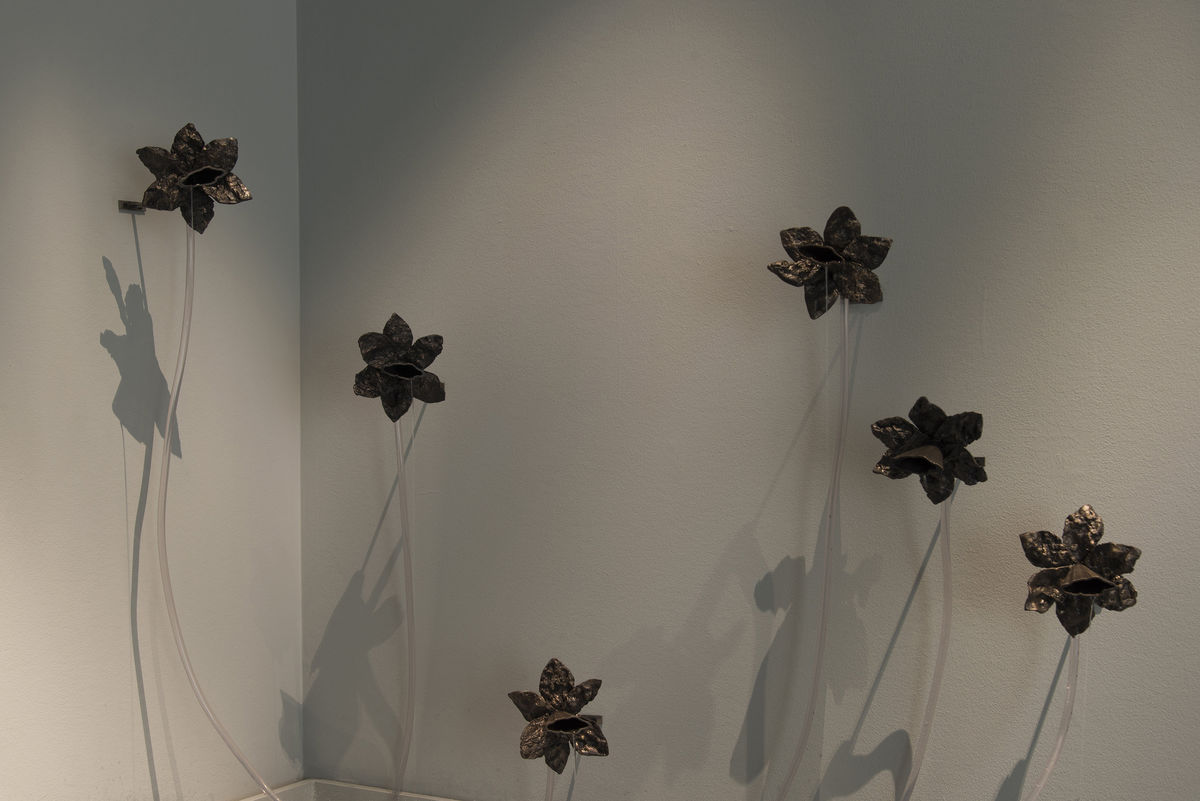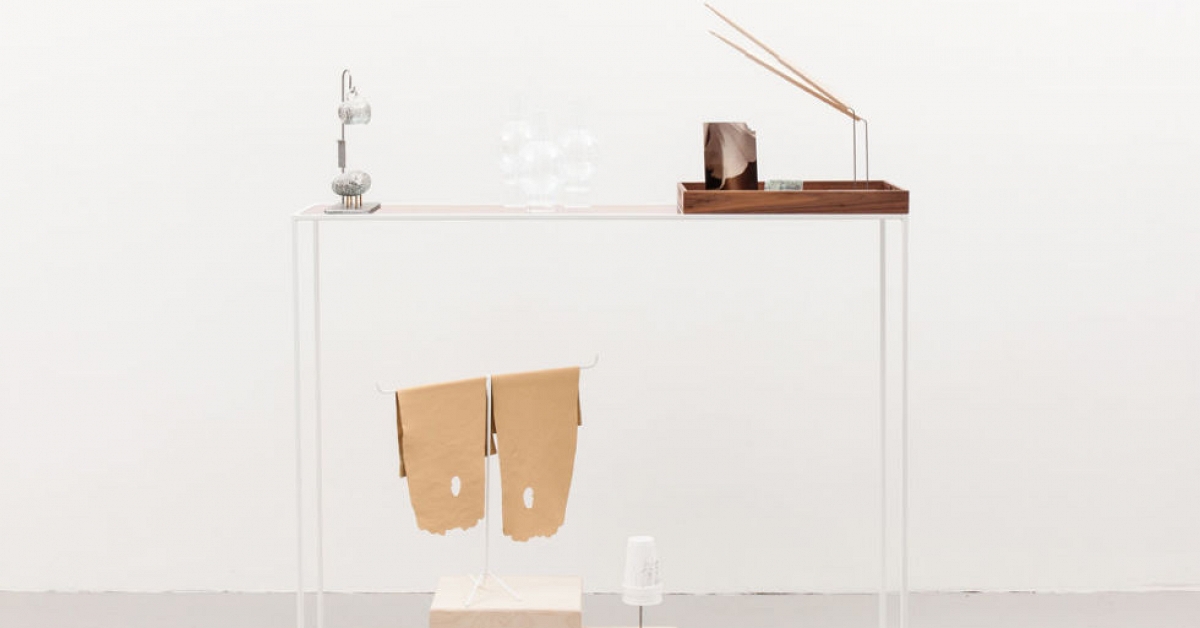Daniel G. Baird: "murmur"
The Brooklyn Rail / Mar 7, 2019 / by Jared Quinton / Go to Original

The scale, calm, and quietude of Daniel G. Baird’s second solo exhibition at PATRON Gallery are befitting of its title: murmur. Indeed, the prevailing features of the installation are its dimness and the burbling hum of tiny fountains. Nestled in a dimly lit alcove, three long shallow troughs feed water into a cluster of small bronze sculptures, which seem to almost float in a darkness that obscures their steel mounts, rubber tubes, and electrical plugs. Through central openings in the delicate forms flow thin but persistent streams of water. Like the murmurs of its title, however, Baird’s installation contains the material and sonic whispers of a broader project, gesturing outward to the natural world and suggesting the necessity of both science and imagination to understand it.
For the past several years, Baird has been returning to the same undisclosed cave somewhere in the American Midwest, making physical castings and 3D scans of its structure and surfaces. He presents these works using a variety of tropes from museological display, like acrylic mounts, steel lab tables, and Plexiglas vitrines. For Baird, the cave is rich with allusions and affective extremes. It is the site of primordial lifeforms, scientific mysteries, and some of the earliest known artworks. It is the original human dwelling and ground zero for European epistemological philosophy in Plato’s allegory, yet it also stands for unknowable depth and darkness. Acknowledging the ultimate impossibility of representing the cave in its entirety, Baird’s works derived from portions of its surface offer an alternative model of understanding the whole through its constituent parts. He has said: “I was drawn to the idea that a 1:1 replica of a cave-surface alluded to, and contained, all other subterranean spaces, while simultaneously referencing the believed source for all creative expression and external representations by humanity.”
In murmur, most of the small fountain-sculptures have a form that suggests a daffodil. For Baird, this flower shape represents the passageway—both real and allegorical—from the outside world into the cave and vice versa. Allegedly derived from one of his cave scans, the petals radiate around the nexus through which the water flows. And the flower of course invokes broader themes of life and rebirth beyond the allusions of its physical form, a delicate and ephemeral thing recast in immutable bronze. Beyond Baird’s wide-ranging references, the sculptures are compelling as personal, invented symbols. They suggest the form of the real cave but also the artist’s embodied subjectivity as mediator between the actual site and the gallery, between the cave’s imagined form and its material specificity. Two other cast bronze sculptures of a hand and ear respectively—the ear trickling water like its flower counterparts—imbue the installation with an eerie, disembodied human presence.

Like many artists working in and around “anthropocene” discourse, Baird sees in art practice a valuable tool for interrogating our relationship to the natural world in an age where science and information are under relentless attack. Counter to the liberal understanding of nature as a passive object of either human salvation or exploitation, work like Baird’s positions land and environment as agents operating outside of any human-nature power binary. In so doing, it seeks to reveal the idea of nature itself as a human construct that privileges a false divide between human life and everything else. It also reveals the pursuit of total understanding to be part and parcel to a project of total domination. The utility of art in this dire global context, then, might not lie in environmental activism or social practice or scientific inquiry, but rather in work whose strangeness or obstinacy cause subtle disruptions in the normal ways we perceive our relation to the world.
As with previous exhibitions of Baird’s work—most notably the experimental FieldStation at Michigan State University’s Broad Museum in 2017—murmur’s power lies in its radical contingency. The artist’s own allegory of the cave not only draws our attention to the ultimate impossibility of fully knowing or accessing the “natural” world, but also locates power in this alienating awareness. Humble and strange as it is, Baird’s disorienting presentation of discrete material objects allows this disjuncture to be sensed, examined, and deeply felt.






